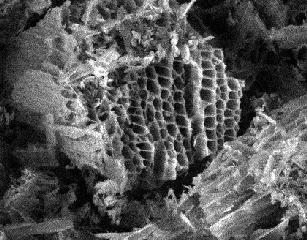How Such Diverse Factors as the Japanese Tsunami and EPA Flue Gas Emissions Rules Affect the Price of Your Water Filter Cartridge
Filter carbon, the most universally used component of modern water treatment, is a manufactured product.
The main raw source materials are coal (lignite, sub-bituminous, bituminous, and anthracite), coconut shell charcoal, and wood (softwood, hardwood, and bamboo). Most carbons used in water filters are made of either coal or coconut shell, largely because with these materials most of the raw material is usable, the ratio of raw material to finished product being close to 3 to 1. Other source materials are not so efficient. Nevertheless, filter carbon can also be made from peat, olive pits, fruit nut shells, palm shells, pecan shells, and macadamia nut shells. Some lesser materials are used in niche markets. Eucalyptus carbon, for example, is a very porous carbon that works well with tannin treatment, but it is now in short supply because it also performs well for olive oil producers.

Filter carbon can vary greatly according to the source material. Much of its functionality depends on pore size.
The raw materials used to manufacture activated carbon are subject to the same global marketing laws of supply and demand that cause price fluctuations in other products. The Japanese, immediately after the March 2011 tsunami, realized that because of radioactive fallout resulting from their nuclear accident they would need huge amounts of activated carbon for the cleanup. Other countries also realized that carbon would be needed to clean up their reservoirs affected by the fallout. Consequently, thousands of metric tons of activated carbons were purchased in addition to regular demand, depleting manufacturers’ stocks and driving prices up worldwide.
Similarly, the EPA’s tightening of the rules governing mercury in flue gas emissions at coal-fired power plants is expected to create a market for an additional 500 to 800 million tons of powdered activated carbon. Other factors that affect the carbon market are import duties, EPA regulations (a new disinfection by-product rule scheduled to go into effect in 2013 will likely make city water departments much better carbon customers), and the world economy in general.
Reference: Ken Schaeffer, “The Activated Carbon Market,” Water Conditioning and Purification, June, 2012.




